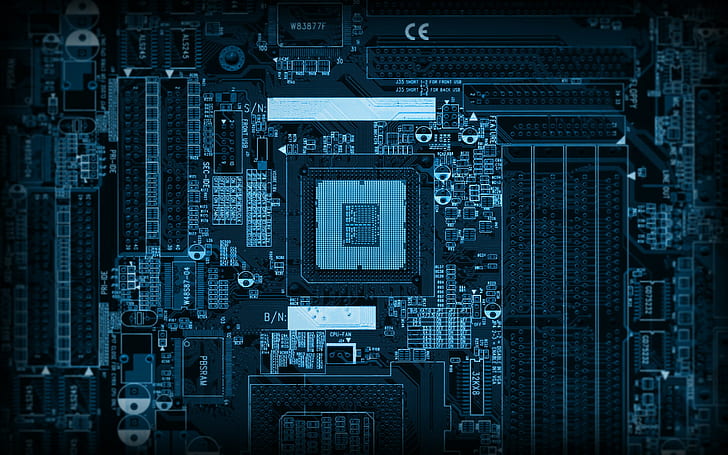Understanding Processors: Types and Key Concepts
 Nivesh S
Nivesh S
“The Grid. A digital frontier. I tried to picture clusters of information as they moved through the computer. What did they look like? Ships, motorcycles? Were the circuits like freeways? I kept dreaming of a world I thought I’d never see. And then, one day I got in…”

Let’s look at the different kinds of processors, the techniques and concepts behind them.
1. Central Processing Unit (CPU)
Overview:
The CPU is the primary component of a computer that performs most of the processing inside a computer.
It executes instructions from a program by performing basic arithmetic, logical, control, and input/output operations.
Techniques and Concepts:
Instruction Set Architecture (ISA): Defines the set of instructions the CPU can execute. Examples include x86, ARM, MIPS, and RISC-V.
Pipelining: A technique where multiple instruction phases are overlapped to improve performance.
Superscalar Architecture: Allows multiple instructions to be issued per clock cycle.
Out-of-Order Execution: Instructions are executed as resources are available rather than in the order they appear in the instruction stream.
Branch Prediction: Predicts the direction of branch instructions to minimize stalling.
Cache Memory: Stores frequently accessed data to reduce the time needed to access memory.
Implementation:
Design Entry: Typically done using Hardware Description Languages (HDLs) like Verilog or VHDL.
Simulation and Synthesis: Tools like Xilinx ISE or Vivado are used for simulating and synthesizing the design.
Verification: Ensuring the design meets specifications through simulation, formal verification, and testing on FPGA or ASIC.
2. Graphics Processing Unit (GPU)
Overview:
- GPUs are specialized for parallel processing, making them suitable for rendering graphics and performing computational tasks involving large data sets.
Techniques and Concepts:
SIMD (Single Instruction, Multiple Data): Executes the same instruction on multiple data points simultaneously.
Massive Parallelism: Thousands of cores work in parallel, processing many tasks concurrently.
Texture Mapping and Shading: Techniques for rendering images and adding depth and realism to graphics.
Memory Hierarchy: Includes different levels of memory (registers, shared memory, global memory) to optimize data access.
Implementation:
Shader Cores: Designed using HDLs and optimized for parallel processing.
Stream Processors: Handle multiple data streams simultaneously.
CUDA (Compute Unified Device Architecture): NVIDIA’s parallel computing platform and programming model for GPUs.
3. Digital Signal Processor (DSP)
Overview:
- DSPs are specialized for real-time signal processing tasks such as audio, video, and communications.
Techniques and Concepts:
Harvard Architecture: Separate memory spaces for instructions and data to allow simultaneous access.
Multiply-Accumulate (MAC) Units: Perform multiply and accumulate operations efficiently, critical for signal processing.
Circular Buffering: Efficient handling of streaming data using circular buffers.
Fixed-Point Arithmetic: Often used for performance and power efficiency.
Implementation:
Pipeline and Parallel Processing: Optimized for repetitive operations on streaming data.
Specialized Instructions: For common DSP operations like FFT (Fast Fourier Transform) and FIR (Finite Impulse Response) filtering.
4. Neural Processing Unit (NPU)
Overview:
- NPUs are specialized for accelerating artificial intelligence and machine learning tasks.
Techniques and Concepts:
Neural Network Acceleration: Optimized for operations like matrix multiplications and convolutions used in neural networks.
Dataflow Architecture: Manages data movement efficiently to keep processing units busy.
Quantization: Reduces the precision of computations to improve efficiency without significantly impacting accuracy.
Sparse Computation: Optimizes processing by skipping zero or insignificant values in computations.
Implementation:
Matrix Multiplication Units: Designed for high-throughput matrix operations.
Convolution Engines: Specialized units for convolution operations in deep learning.
On-chip Memory: Reduces data transfer overhead by storing neural network weights and activations close to processing units.
5. Field-Programmable Gate Array (FPGA)
Overview:
- FPGAs are reconfigurable hardware platforms that can implement various processor architectures.
Techniques and Concepts:
Configurable Logic Blocks (CLBs): The basic building blocks of FPGAs, which can be configured to implement logic functions.
Reconfigurability: Ability to change the hardware configuration after manufacturing.
Parallelism: FPGAs can exploit parallelism at a fine-grained level for high performance.
Custom Accelerators: Implement custom processing units tailored for specific tasks.
Implementation:
HDL Design: Use Verilog or VHDL to describe the desired hardware functionality.
Synthesis and Implementation: Tools like Xilinx Vivado or Intel Quartus Prime for synthesis and place-and-route.
Testing and Verification: Verify the design on FPGA development boards before deployment.
ChatGPT-4o is quite impressive. It provided me with the skeleton and topics. Combined with research, I believe we are in for many advancements in the near future!
Subscribe to my newsletter
Read articles from Nivesh S directly inside your inbox. Subscribe to the newsletter, and don't miss out.
Written by
